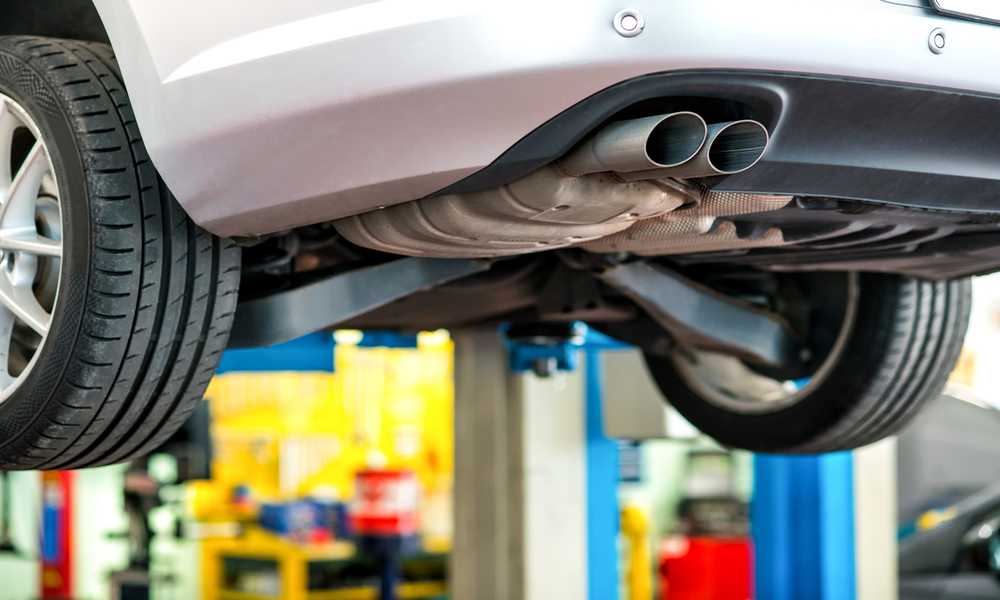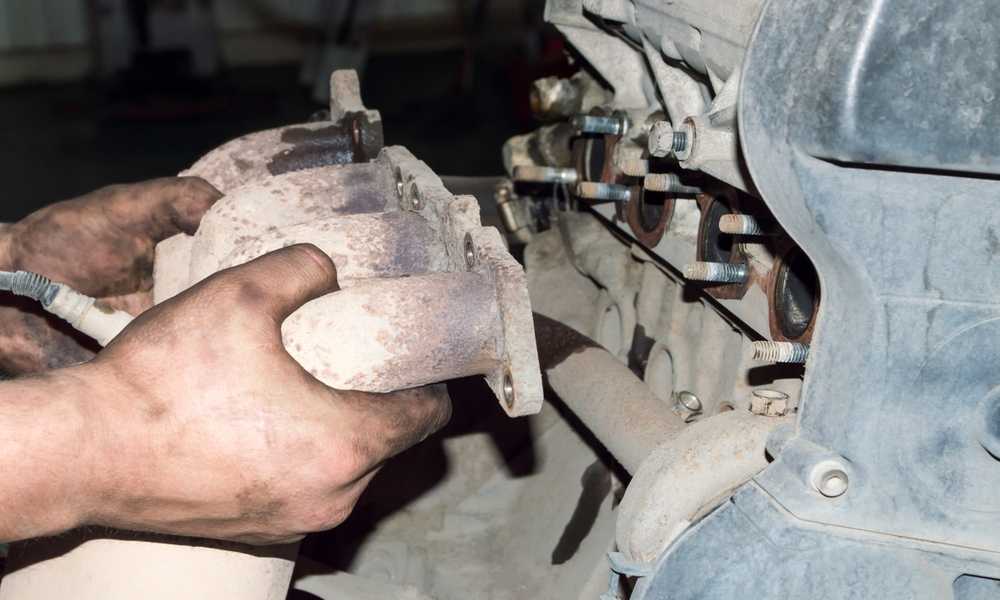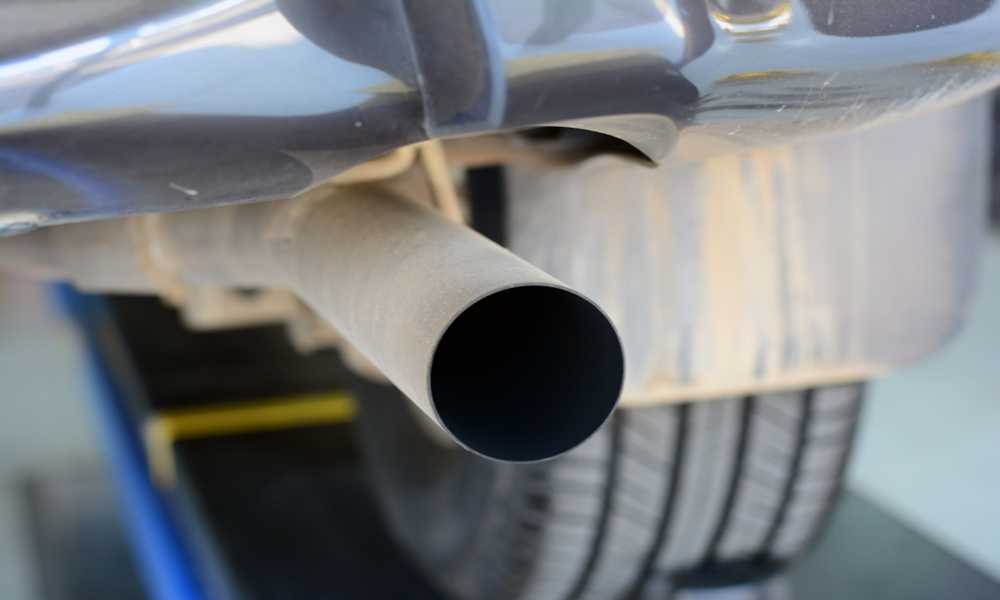Are you ready to take your driving experience to a whole new level? Brace yourself, because we’re about to dive into the exhilarating world of straight pipe exhaust systems. If you’re a car enthusiast or simply love the roar of an engine, then this blog post is for you.
A straight pipe exhaust system may sound like something out of a high-octane action film, but it’s actually a modification that can significantly enhance your vehicle’s performance and aesthetics. From increased horsepower to better fuel economy, there are plenty of advantages to consider. However, as with any alteration, there are also potential drawbacks that need careful consideration.
So buckle up and join us on this journey as we explore the pros and cons of installing a straight pipe exhaust system in your beloved ride. Whether you’re seeking raw power or simply want heads turning wherever you go, let’s find out if going “straight” is indeed the best route for you!
Advantages of Straight Pipe Exhaust System
1. Increased Performance and Horsepower
One of the primary advantages of a straight pipe exhaust system is the potential for increased performance and horsepower. By removing restrictions in the exhaust flow, such as mufflers and catalytic converters, a straight pipe setup allows for improved airflow. This unrestricted airflow means that exhaust gases can exit the engine more efficiently, reducing backpressure and allowing it to breathe easier. As a result, this can lead to an increase in horsepower and torque output. The removal of restrictive components also helps to reduce heat buildup within the exhaust system. Cooler temperatures mean that engine components are less likely to overheat or be subjected to excessive wear and tear, leading to improved overall performance and reliability.
Furthermore, a straight pipe setup can benefit turbocharged engines by reducing turbo lag. With less backpressure in the exhaust system, turbochargers can spool up faster, resulting in quicker throttle response and increased power delivery. It’s important to note that while a straight pipe configuration may offer these performance benefits on certain vehicles or engines, it may not always be suitable or legal for road use. It’s essential to research local laws regarding emissions regulations before opting for this modification.
In conclusion, the increased performance and horsepower potential offered by a straight pipe exhaust system make it an appealing choice for enthusiasts looking to enhance their vehicle’s power output. However, it is crucial to consider legal requirements and potential drawbacks associated with noise levels and environmental impact before making any modifications.
2. Less Vehicle Weight
One of the advantages of installing a straight pipe exhaust system is that it helps in reducing the overall weight of your vehicle. Traditional exhaust systems are usually bulky and heavy, with various components such as mufflers, resonators, and catalytic converters. By removing all these components and replacing them with a straight pipe, you can significantly reduce the weight of your vehicle.
A lighter vehicle has several benefits. It improves overall performance by reducing the amount of weight that needs to be moved around. With less weight to carry, your engine doesn’t have to work as hard to accelerate or maintain speed. A lighter vehicle also improves fuel efficiency. When your car is lighter, it requires less energy from the engine to move forward. This results in improved gas mileage and ultimately saves you money at the pump.
Reduced weight can enhance handling and maneuverability. With less mass to control, your car becomes more responsive when cornering or changing lanes. Opting for a straight pipe exhaust system not only enhances performance but also contributes towards making your vehicle lighter and more efficient on the road without compromising safety or functionality
3. Might Sound Cool on the Right Car
One of the advantages of a straight pipe exhaust system is that it might sound cool on the right car. The deep and aggressive rumble produced by a straight pipe can turn heads and make a statement. Picture this: you’re cruising down the street in your sleek sports car, and as you accelerate, the roar from your straight pipe exhaust fills the air. It’s an exhilarating experience that adds an extra level of excitement to your drive.
However, it’s important to note that not all cars are suitable for a straight pipe exhaust system. Some vehicles may produce an unpleasant or obnoxious sound when equipped with a straight pipe. That’s why it’s crucial to consider factors such as engine size, type, and overall design before opting for this modification. For those who appreciate the auditory aspect of driving, having a cool-sounding exhaust can enhance their overall experience on the road. The deep growl emitted by a well-tuned straight pipe can create an impression of power and performance.
It’s worth mentioning that personal preference plays a significant role when determining whether or not a certain vehicle sounds cool with a straight pipe exhaust system. While some may find it thrilling and enjoyable, others might perceive it as excessive noise pollution. While there is no denying that a properly fitted straight pipe exhaust system has its appeal in terms of producing an attention-grabbing sound, choosing the right car for this modification is essential to achieve optimal results without crossing into noisy territory!
4. Better fuel economy

Better fuel economy is one of the advantages that a straight pipe exhaust system can offer. By removing restrictions in the exhaust system, such as mufflers and catalytic converters, the engine is able to expel exhaust gases more efficiently. This improved efficiency can result in better fuel consumption.
When there are fewer components obstructing the flow of exhaust gases, the engine doesn’t have to work as hard to push them out. As a result, less energy is wasted and more power is delivered to the wheels. With increased power delivery comes improved fuel economy. Additionally, straight pipe exhaust systems often weigh less than their stock counterparts due to the removal of unnecessary components. A lighter vehicle requires less energy to move, which translates into better fuel efficiency.
However, it’s important to note that while a straight pipe exhaust system may improve fuel economy under certain conditions, it may not be significant enough for everyday driving situations. Other factors like driving habits and road conditions also play a role in determining overall fuel consumption. Although a straight pipe exhaust system has potential benefits for improving fuel economy by reducing restrictions and weight on your vehicle’s engine, it shouldn’t be seen as a guaranteed solution for maximizing efficiency at all times.
5. Less maintenance
One of the advantages of a straight pipe exhaust system is that it requires less maintenance compared to other types of exhaust systems. This can be attributed to its simple design, which eliminates the need for complex components such as mufflers and catalytic converters.
With fewer parts to worry about, there are fewer chances for things to go wrong. This means that you’ll spend less time and money on repairs and replacements. Additionally, since straight pipe exhausts don’t have any restrictions or baffles, there’s no need to clean or replace them periodically. Moreover, because a straight pipe exhaust system doesn’t contain any materials like mufflers or catalytic converters that can deteriorate over time due to heat and exposure to the elements, it tends to last longer than traditional exhaust systems.
In terms of maintenance requirements, all you really need to do with a straight pipe exhaust is regularly inspect it for leaks or damage. If there are any issues, they can usually be resolved quickly without having to disassemble the entire system. Choosing a straight pipe exhaust system not only enhances performance but also reduces your maintenance responsibilities – allowing you more time and freedom on the road!
6. Aesthetics
When it comes to the aesthetics of a car, the straight pipe exhaust system can be a polarizing topic. Some people love the aggressive and sporty look that it gives to their vehicle, while others may find it too loud or attention-grabbing. Regardless of personal preference, there’s no denying that a straight pipe setup can make a bold statement.
One of the main aesthetic benefits of a straight pipe exhaust system is its simplicity. With no mufflers or resonators in the way, the pipes are exposed and visible underneath the car. This creates an industrial and rugged appearance that many enthusiasts appreciate. Additionally, some drivers enjoy the symmetrical look that straight pipes provide. The equal length and diameter of each pipe create a balanced visual effect from behind, which adds to the overall appeal for those who value harmony in design.
Furthermore, if you’re into car modifications and customizations, having a straight pipe exhaust system offers endless possibilities for additional enhancements. You can choose different materials like stainless steel or titanium for your pipes to further personalize your ride’s appearance. In terms of color options, ceramic coating or heat wrapping can be applied to give your exhaust pipes a unique finish. Whether you prefer sleek black or eye-catching metallic shades, these coatings not only enhance aesthetics but also provide added durability against heat damage.
Disadvantages of Straight Pipe Exhaust System
1. Terrible Sound of the Exhaust
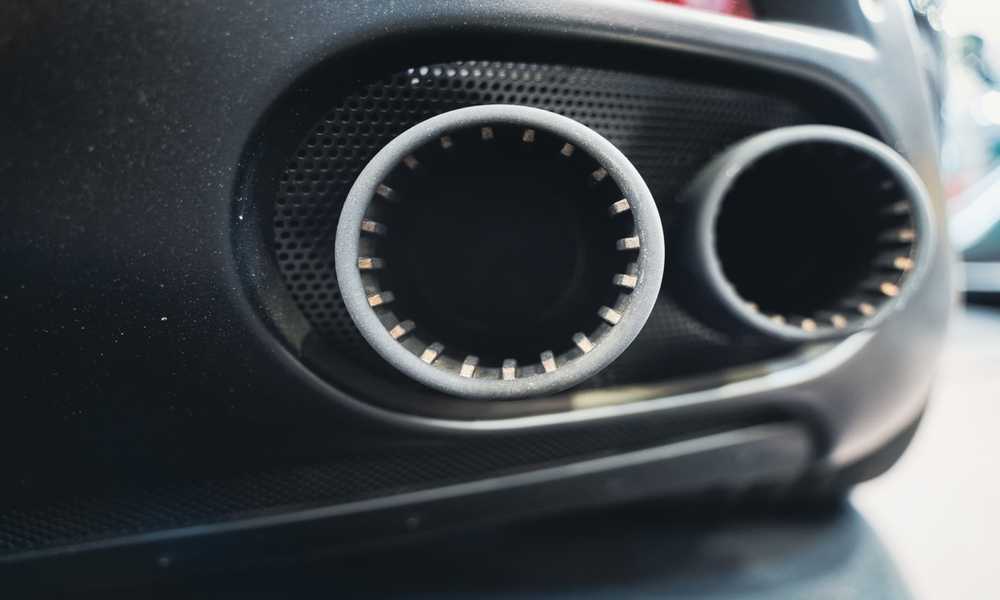
One of the most polarizing aspects of straight pipe exhaust systems is the sound they produce. For some, the aggressive and loud rumble is music to their ears, while others find it downright irritating. Whether you love it or hate it, there’s no denying that a straight pipe can make your car stand out from the crowd.
The deep growl emitted by a straight pipe exhaust system is a result of eliminating all mufflers and resonators in the exhaust system. While this might appeal to those seeking an attention-grabbing sound, it can be quite disruptive for others – especially when driving in residential areas or late at night. In addition to being potentially annoying to bystanders, the noise produced by a straight pipe exhaust can also affect your own driving experience. The constant drone inside the cabin can become fatiguing during long journeys, making it difficult to hold conversations or enjoy music without cranking up the volume.
Furthermore, certain modifications made to create that distinctive sound may actually compromise engine performance. Without proper tuning and adjustments, removing components like mufflers and resonators could disrupt back pressure levels and alter airflow dynamics within the engine. This could lead to reduced torque and horsepower gains compared to other types of aftermarket exhaust systems. It’s worth noting that not all cars benefit from having a straight pipe setup in terms of sound quality either. Some vehicles have engines that simply don’t produce an appealing tone without any kind of muffling or resonance control.
Whether you consider the sound produced by a straight pipe exhaust as terrible or thrilling depends on personal preference. While some enthusiasts appreciate its rawness and rebellious nature, others prefer more refined tones from their vehicle’s exhaust system. So if you’re considering installing a straight pipe on your car solely for its aggressive sound output, be prepared for mixed reactions from both yourself and those around you!
2. Harmful To the Environment
When it comes to the environmental impact of a straight pipe exhaust system, there are some concerns to consider. One of the main issues is increased emissions. Without any restrictions or mufflers in place, harmful gases and pollutants are released directly into the atmosphere.
These emissions can contribute to air pollution and have negative effects on both human health and the environment. They can increase smog levels, worsen respiratory conditions, and even contribute to climate change. Additionally, a straight pipe exhaust system may not meet certain emission regulations set by environmental agencies. This means that using such a system could result in fines or penalties if your vehicle doesn’t comply with local laws.
Furthermore, a straight pipe exhaust system tends to produce louder noise levels compared to traditional exhaust systems. This excessive noise can disrupt wildlife habitats and disturb nearby communities. While a straight pipe exhaust system may offer performance benefits for your vehicle, it’s important to be mindful of its potential negative impact on the environment. Considering alternative options that strike a balance between performance and eco-friendliness might be worth exploring for those concerned about their carbon footprint.
3. Depreciation in Resale Value of Vehicle
One important factor to consider when installing a straight pipe exhaust system is the potential impact it can have on the resale value of your vehicle. While there are certainly advantages to this type of exhaust system, it’s essential to weigh them against the potential drawbacks.
When it comes to depreciation in resale value, a straight pipe exhaust system can be a significant factor. Many buyers prefer vehicles with factory-installed or aftermarket exhaust systems that meet noise and emissions regulations. By removing components like mufflers and catalytic converters, you’re essentially altering the car’s original specifications and potentially limiting its appeal in the used car market.
It’s worth noting that not all buyers will be deterred by a modified exhaust system. Some may even see it as an added bonus if they’re looking for enhanced performance or a more aggressive sound. However, these individuals tend to be in the minority compared to those who prefer stock vehicles or those with approved modifications.
Whether or not depreciation affects your vehicle’s resale value will depend on various factors, including the make and model of your car and the preferences of potential buyers in your area. If preserving resale value is important to you, it may be wise to opt for an exhaust system that meets regulatory standards while still providing some performance benefits.
4. Emissions
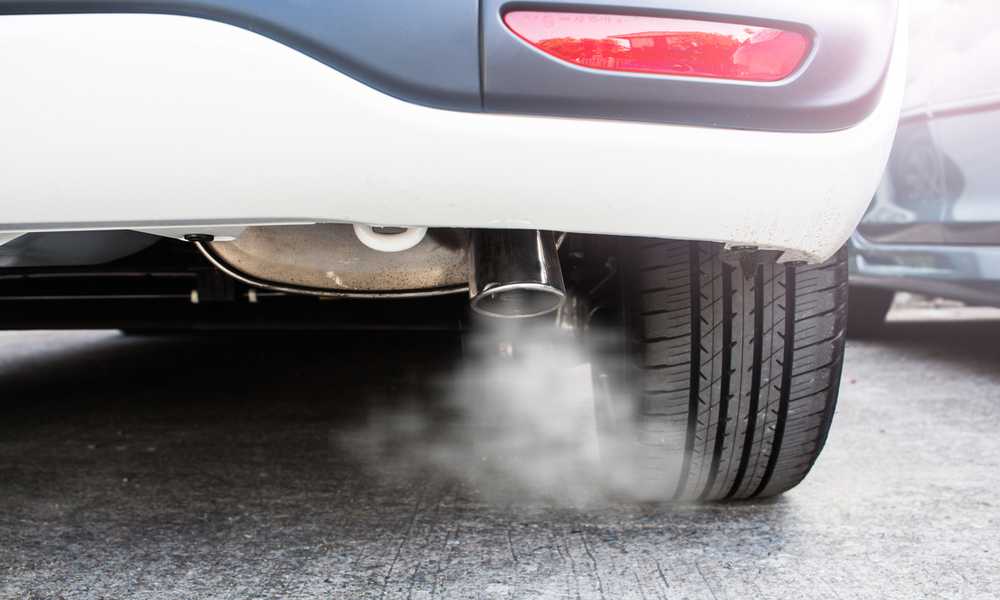
Emissions are a significant concern when it comes to straight pipe exhaust systems. While these systems may offer some performance benefits, they also have drawbacks in terms of their impact on the environment. One of the main issues with straight pipe exhausts is that they can increase emissions of harmful pollutants. Without any restrictions or mufflers to filter and reduce emissions, these pollutants are released directly into the air. This can contribute to air pollution and negatively affect both human health and the environment. In particular, nitrogen oxides (NOx) and carbon monoxide (CO) levels tend to be higher with a straight pipe exhaust system. These gases are known for their detrimental effects on air quality and can cause respiratory problems in humans.
Additionally, without proper catalytic converters or other emission control devices, a straight pipe exhaust system may not meet the necessary regulations set by environmental agencies. This could result in legal consequences for vehicle owners who choose this type of modification. It’s important to consider the potential negative impact on emissions before deciding whether a straight pipe exhaust system is right for you. While it may provide certain advantages in terms of performance or aesthetics, it’s crucial to weigh these factors against its environmental implications.
5. Exhaust drone
Exhaust drone is a common concern for car enthusiasts when it comes to straight pipe exhaust systems. This refers to the loud, booming noise that can occur at certain RPM ranges, particularly during highway driving. While some people enjoy the aggressive sound of a straight pipe exhaust, others find the constant drone irritating.
One of the main causes of exhaust drone is the lack of mufflers in a straight pipe system. Mufflers are designed to reduce and control sound levels by using chambers and baffles to absorb or redirect sound waves. Without them, the engine noise travels freely through the pipes, resulting in an amplified and sometimes unpleasant sound. The severity of exhaust drone can vary depending on factors such as engine size, configuration, and overall vehicle design. It’s important to note that not all cars will experience excessive drone with a straight pipe setup.
For those who prioritize a quieter driving experience or live in areas with strict noise regulations, it may be advisable to opt for alternative exhaust configurations that incorporate resonators or mufflers. These components can help mitigate excessive noise without sacrificing too much performance. Whether or not you find exhaust drone bothersome is subjective and depends on personal preference. Some drivers embrace the raw and aggressive nature of a straight pipe system despite its drawbacks in terms of noise level.
What does a straight pipe exhaust do?
It’s a question that many car enthusiasts ask when considering modifications to their vehicles. A straight pipe exhaust system is designed to remove all restrictions from the exhaust flow, allowing for maximum performance and increased horsepower. By eliminating mufflers and catalytic converters, the straight pipe allows gases to exit the engine more efficiently. This leads to better airflow and reduced back pressure in the exhaust system. With less resistance, the engine can breathe easier and generate more power.
In addition to improved performance, a straight pipe exhaust can also reduce vehicle weight. By removing bulky components like mufflers and resonators, you’re shedding unnecessary pounds from your ride. This not only enhances acceleration but also improves handling and overall agility. Another advantage of a straight pipe exhaust is its potential for an impressive sound on certain cars. Without the restrictions of mufflers or other silencing devices, your engine’s roar becomes much louder and more aggressive. However, it’s important to note that this may not be everyone’s cup of tea as some find it too noisy or even obnoxious.
Furthermore, a properly designed straight pipe exhaust can actually improve fuel economy by reducing back pressure in the system. With freer-flowing gases exiting the engine more efficiently, there is less wasted energy resulting in better mileage. Maintenance is often simplified with a straight pipe setup as well since there are fewer components prone to failure or clogging up over time compared to traditional systems with multiple parts such as catalytic converters or mufflers.
Aesthetic appeal plays a role in choosing a straight pipe system for some car enthusiasts who appreciate seeing exposed pipes running under their vehicle giving off an aggressive look that sets them apart from others on the road. While there are several advantages associated with installing a straight piped exhaust system – including increased performance and horsepower gains – it’s important to consider potential drawbacks such as noise levels which could be displeasing especially if you drive in densely populated areas.
Is straight pipe the best exhaust?
The question of whether a straight pipe exhaust system is the best option for your vehicle is one that often sparks debate among car enthusiasts. While there are certainly advantages to this type of exhaust setup, it may not necessarily be the “best” choice for everyone. One of the primary benefits of a straight pipe exhaust system is increased performance and horsepower. By removing restrictive components such as mufflers and catalytic converters, exhaust gases can flow more freely, resulting in improved engine efficiency and power output.
Additionally, a straight pipe setup can help reduce vehicle weight. Without bulky mufflers and other components weighing it down, your car may feel lighter and more nimble on the road. In terms of aesthetics, some people find that a straight pipe exhaust gives their vehicle a sleeker and sportier appearance. The absence of traditional mufflers allows for a cleaner look at the rear end.
However, there are also drawbacks to consider when opting for a straight pipe exhaust system. One major disadvantage is the sound produced by this setup. Without any muffling or noise-canceling features, the engine’s roar can become extremely loud and potentially annoying to both you and those around you.
Furthermore, from an environmental standpoint, straight pipes contribute to increased emissions since they lack catalytic converters that help reduce harmful pollutants released into the atmosphere. Another consideration is resale value depreciation. Many potential buyers prefer vehicles with factory-standard or aftermarket-approved modifications rather than customizations like a full-on straight pipe exhaust system.
It’s important to note that running without any back pressure from traditional mufflers can lead to decreased fuel economy in some cases due to altered air-to-fuel ratios or inefficient combustion processes. Whether or not a straight pipe exhaust system is right for you depends on various factors including personal preference in terms of sound and aesthetics as well as local regulations regarding emissions standards. It’s always recommended to consult with experts who can provide guidance based on your specific needs before making any modifications to your vehicle’s exhaust system.
How much Horsepower can be increased in a Straight Pipe Exhaust System?
When it comes to increasing horsepower in a vehicle, many enthusiasts turn to the straight pipe exhaust system. This modification has gained popularity for its potential to improve performance and add an aggressive sound. But just how much horsepower can you expect from a straight pipe exhaust? The answer varies depending on several factors, including the make and model of your vehicle, as well as any other modifications that have been made. In general, installing a straight pipe exhaust can result in a modest increase in horsepower.
One reason for this is the removal of restrictions in the exhaust system. With no mufflers or catalytic converters to impede airflow, gases can exit more freely and quickly. This improved flow allows for better scavenging of exhaust gases and helps the engine breathe more efficiently. Additionally, reducing back pressure can lead to increased torque throughout the rev range. This means your vehicle will feel more responsive when accelerating and may reach higher power levels at higher RPMs.
It’s important to note that while a straight pipe exhaust can provide some horsepower gains, they are typically not significant enough on their own to drastically transform your vehicle’s performance. To achieve substantial increases in power output, other modifications such as intake upgrades or engine tuning may be necessary. Every vehicle is unique, so it’s difficult to give an exact number when it comes to horsepower gains from a straight pipe exhaust system. Factors such as engine size, compression ratio, and fuel delivery all play a role in determining how much additional power you’ll experience.
If you’re considering installing a straight pipe exhaust solely for increased horsepower gains, it may be worth consulting with an automotive professional or researching specific forums dedicated to your make and model of vehicle. They can provide insights into real-world experiences with similar setups and help you determine if this modification aligns with your goals. Remember that modifying your vehicle’s exhaust system should always be done within legal limits set by local authorities regarding noise pollution regulations or emissions standards.
What’s the difference between straight pipe and normal exhaust?
Let’s delve into the key distinctions between these two options. One significant difference lies in their design. A normal exhaust typically consists of several components, including a muffler and catalytic converter, which help reduce noise and emissions. On the other hand, a straight pipe exhaust eliminates these components entirely, allowing for an unobstructed flow of exhaust gases. This leads us to another distinction – sound. A straight pipe setup produces a much louder and aggressive tone compared to a normal exhaust. The absence of mufflers means that there are no restrictions or dampening effects on the sound waves produced by the engine.
In terms of performance, the removal of restrictive elements like mufflers can potentially enhance horsepower and torque output in a straight pipe system. By minimizing backpressure, more air can flow freely through the engine, resulting in improved overall performance. However, it’s important to note that while increased power may be appealing to some enthusiasts, this modification might not comply with local laws or emission standards due to higher pollutant levels emitted by vehicles equipped with straight pipes.
Furthermore, without proper tuning and adjustments to compensate for reduced backpressure caused by eliminating certain components found in regular exhaust systems (such as resonators), there is also potential for decreased low-end torque or drivability issues. Whether you choose a straight pipe or traditional exhaust depends on your personal preferences and intended use for your vehicle. Just remember that modifying your vehicle’s stock configuration should always be done responsibly and within legal guidelines established in your area.
Does straight pipe increase fuel consumption?
Many car enthusiasts are drawn to the idea of installing a straight pipe exhaust system because they believe it can increase their vehicle’s performance. However, one concern that often comes up is whether or not this modification will lead to increased fuel consumption.
The truth is, a straight pipe exhaust system can potentially impact fuel consumption, but it’s not as simple as saying it always leads to higher fuel usage. In fact, there are several factors at play when considering how an exhaust system affects fuel economy. Removing the muffler and other components from the exhaust system can reduce back pressure and allow for better airflow. This improved flow may result in a slight increase in horsepower and torque, which could potentially enhance fuel efficiency if driving habits remain unchanged.
On the other hand, a straight pipe exhaust might also lead to more aggressive driving behavior due to the amplified engine sound. Drivers may be tempted to rev their engines more frequently or accelerate harder just to hear that throaty roar. These behaviors inherently consume more fuel and offset any potential gains from improved airflow. Additionally, some vehicles rely on backpressure produced by the original exhaust design for optimal operation. Altering this balance with a straight pipe setup could disrupt engine performance and negatively affect overall efficiency.
It’s important to note that each vehicle responds differently to modifications like a straight pipe exhaust system. Factors such as engine size, turbocharging or supercharging systems (if applicable), and even electronic control unit programming may influence how much impact such modifications have on fuel consumption. If you’re considering installing a straight pipe exhaust solely for its potential effects on fuel consumption, it’s essential to evaluate your driving habits alongside other aspects of your vehicle’s performance before making any decisions. Consulting with professionals who specialize in aftermarket modifications can provide valuable insights tailored specifically for your car model and individual needs.
Tell me the back pressure of the exhaust system?
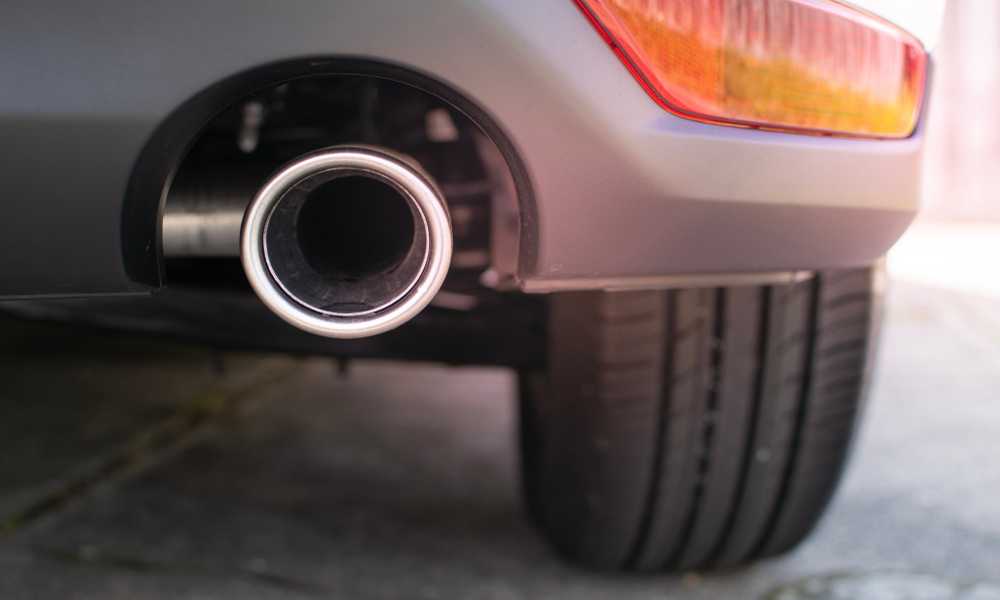
The back pressure of an exhaust system refers to the resistance that the gases face when exiting the engine and flowing through the exhaust pipes. In a straight pipe exhaust system, there is minimal back pressure because there are no mufflers or restrictive components in place.
Without any restrictions, the gases can flow freely, allowing for increased horsepower and performance. This is why many car enthusiasts opt for a straight pipe exhaust system as it can significantly enhance their vehicle’s power. When it comes to back pressure, it’s important to find a balance. While some back pressure is necessary for optimal engine performance, too much can hinder power output. Straight pipe exhaust systems help minimize this restriction and allow for better airflow.
However, it’s worth noting that removing all back pressure from an exhaust system may not be suitable or beneficial for every vehicle. Factors such as engine size, tuning, and intended use should be considered before deciding on a straight pipe setup. Understanding the concept of back pressure in an exhaust system helps car enthusiasts make informed decisions about modifications that can improve their vehicle’s performance. So next time someone asks you about the back pressure of an exhaust system, you’ll have all the knowledge to engage in an interesting conversation!
Final Thoughts
In the world of automotive enthusiasts, the debate over straight pipe exhaust systems continues to rage on. While there are certainly advantages to installing a straight pipe exhaust system, such as increased performance and horsepower, reduced vehicle weight, and improved fuel economy, there are also several disadvantages that must be considered.
One of the main drawbacks of a straight pipe exhaust system is the terrible sound it produces. This loud and aggressive noise may appeal to some car enthusiasts but can be quite obnoxious for others. Additionally, this excessive noise can harm the environment by increasing pollution levels.Furthermore, choosing to install a straight pipe exhaust system might lead to depreciation in the resale value of your vehicle. Potential buyers may be turned off by the unconventional modification and prefer a more traditional exhaust setup.
Another factor to consider is emissions. Straight pipe systems may not comply with local emission regulations since they eliminate catalytic converters or mufflers responsible for reducing harmful pollutants emitted by vehicles. One common complaint about straight pipes is their tendency to produce an annoying drone at certain RPMs while driving at highway speeds. This constant drone can quickly become tiresome during long journeys.
So while a straight pipe exhaust system offers benefits like increased power and better fuel economy, it also comes with downsides such as irritating noise levels, potential environmental harm due to increased emissions, decreased resale value of your vehicle, and annoying drone sounds during high-speed cruising. Whether or not a straight pipe exhaust system is right for you depends on your personal preferences and priorities when it comes to your car’s performance and sound. It’s important to weigh both sides carefully before making any modifications that could impact your driving experience or future resale options.
